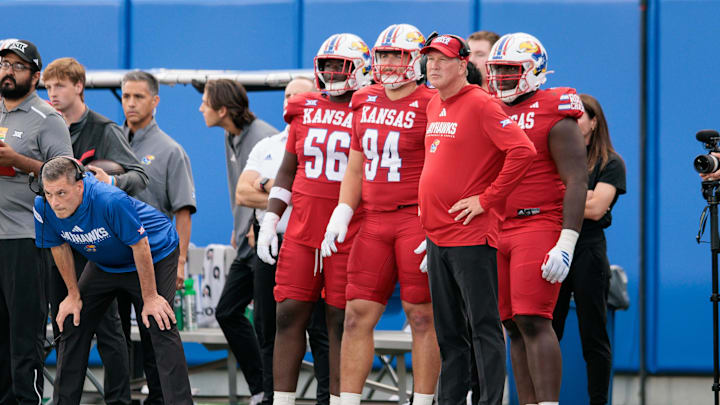The Jayhawks are in the midst of their first of two bye weeks this season, and usually bye weeks are very welcome after an impressive win. However, after a 42-31 loss to bitter rivals, it usually leaves fans wanting the next game to come as soon as possible.
Post-game updates have seen Kansas tumble down several rankings and out of contention for a spot on the AP Polls, yet ESPN’s FPI still sheds positive light on the immediate future under coach Lance Leipold.
For those needing a quick explanation of what FPI is. “The Football Power Index (FPI) is a measure of team strength that is meant to be the best predictor of a team's performance going forward for the rest of the season. FPI represents how many points above or below average a team is. Projected results are based on 20,000 simulations of the rest of the season using FPI, results to date, and the remaining schedule. Ratings and projections update daily.”
Kansas’ FPI sits at 8.8, which places them 34th in the nation. This sits one place below fellow Iowa State and one place above ACC side SMU. FPI places Kansas as the sixth-best team in the Big 12. The Jayhawks’ projected win total sits anywhere from a 4.8-7.3 win total. This sits as the sixth-highest projected wins in the Big 12. Kansas’ offensive efficiency sits at 79.6, which poses the seventh-ranked Big 12.
The Jayhawks’ defense falls to the fifth-worst conference efficiency at just 58.8. Here is how ESPN gauges its efficiency rating.
“Team efficiencies are based on the point contributions of each unit to the team's scoring margin, on a per-play basis. The values are adjusted for strength of schedule and down-weighted for "garbage time" (based on win probability). The scale goes from 0 to 100; higher numbers are better and the average is roughly 50 for all categories.”
Now the FPI does come with its critics, as in the early season. So do not use this as an end-all all be-all in the metric universe, and the numbers will vary throughout the season. But with the fact that Kansas has played a game more than a majority of other teams, combined with the notion that Kansas has faced opponents on three different scales of the college football ladder, it is nice to see some type of numbers gather an albeit early evaluation of the team
